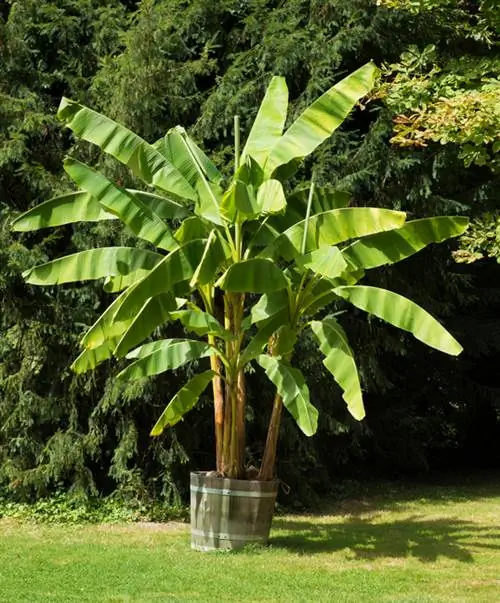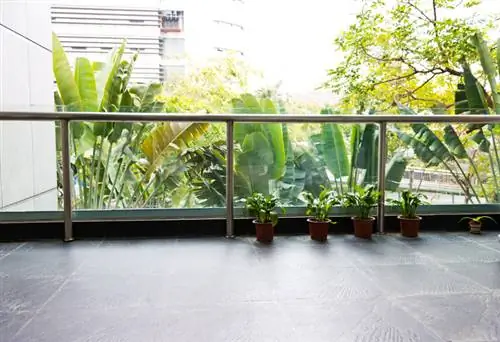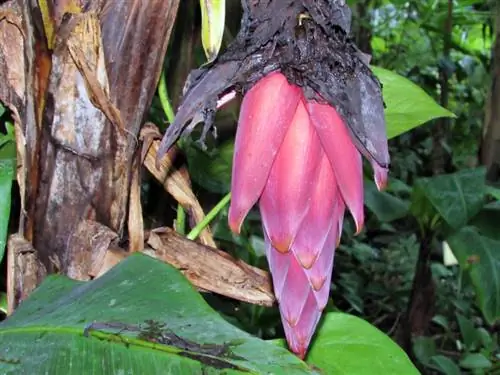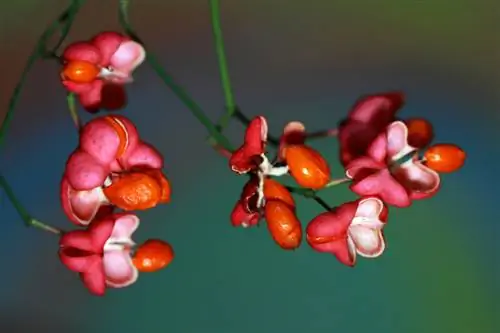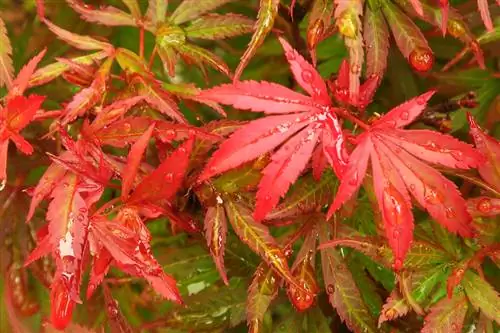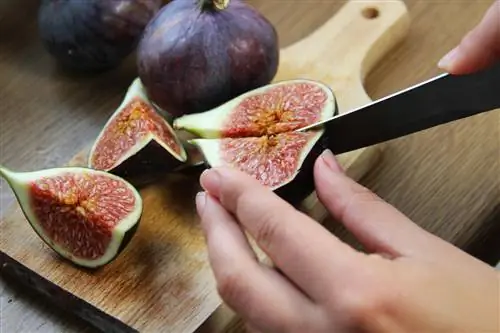- Author admin [email protected].
- Public 2023-12-16 16:46.
- Last modified 2025-01-23 11:21.
The Japanese fiber banana does not place any great demands on the experienced home gardener. However, there are a few things to consider when caring for it.
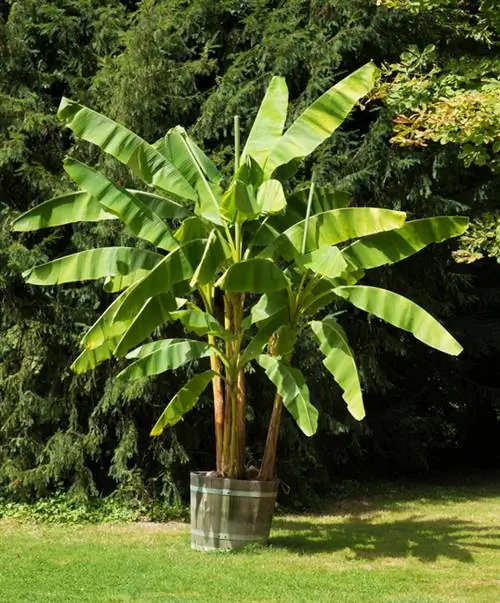
What should you pay attention to when watering the Japanese fiber banana?
From spring to autumn, the planting substrate around the roots of a Japanese fiber banana should be kept evenly moist, especially when grown as a container plant. In winter, you should definitely water more sparingly, as the roots should not become waterlogged during this time when the vegetation is dormant.
When and how can the Japanese fiber banana be repotted?
For the relatively strong growth of a banana tree, an adequate supply of nutrients is necessary. Therefore, a constant supply of nutrients should be ensured in spring and summer with suitable fertilizers. In addition, after overwintering, this banana can be transplanted annually into a slightly larger pot with fresh planting substrate. If the Japanese fiber banana is planted in the garden bed over the summer, a root barrier should limit root growth. Otherwise you could have difficulty getting the banana tree back into a pot for overwintering before winter.
How is the Japanese fiber banana cut?
Basically, the Japanese fiber banana doesn't actually need to be cut. However, wilted or damaged leaves can be removed at any time with a sharp knife. However, you should be careful not to cut into the “trunk”. If disease occurs, Musa basjoo can be cut back to a height of about 5 cm above the ground and hoped for new growth.
Which pests can harm the Japanese fiber banana?
In principle, this type of banana is not particularly often attacked by pests. However, if the winter is too dry, spider mites (€17.00 on Amazon) can occasionally appear. You can prevent this by increasing the humidity in your winter quarters.
What can be done about diseases of the Japanese fiber banana?
Dry and brown leaf edges on bananas are usually not a sign of disease, but rather of infrequent watering and too low humidity. If you want to avoid chemical agents in the event of illness, the only thing that often helps is a radical pruning.
How is the Japanese fiber banana optimally fertilized?
As with other potted plants such as the princess flower, fertilization for Japanese fiber bananas should be stopped in good time before overwintering. From spring onwards, liquid fertilizer can be administered together with the irrigation water about every two weeks. Alternatively, you can also use:
- Complete fertilizer in solid form
- Fertilizer sticks
- ripened compost
- other organic fertilizers such as horn shavings
How does the Japanese fiber banana get through the winter optimally?
This type of banana is often mistakenly marketed as hardy. In reality, the Japanese fiber banana can survive a maximum of minus 15 degrees Celsius for short periods of time when planted. Please note that young specimens in the planter are more exposed to the cold than older banana trees in the bed. While some locations in the wine-growing climate offer suitable conditions for year-round cultivation outdoors, elsewhere these banana trees should be overwintered in a cool cellar.
Tip
Before overwintering, wilted leaves should be cut off and the substrate in the pot should be relatively dry. If the temperatures are cool and the pot is waterlogged, the Japanese fiber banana will quickly develop root rot in winter.

